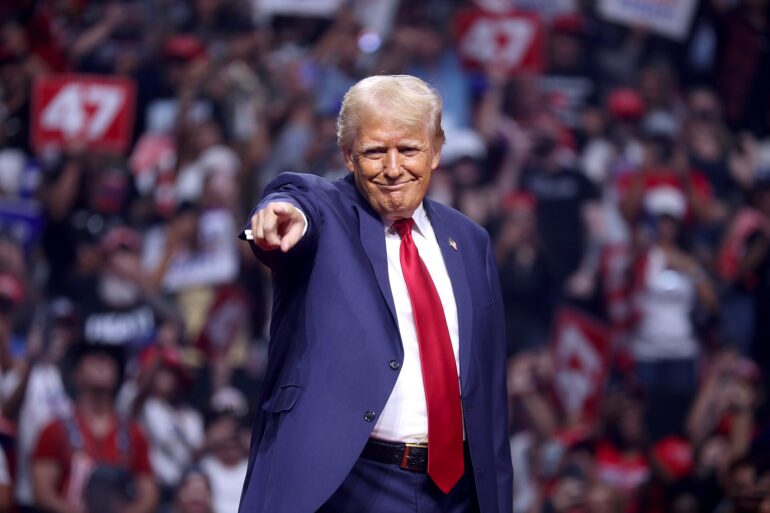President Donald J. Trump on Friday reportedly signed an executive order to rebrand the Department of Defense as the Department of War, casting the decision as both symbolic and strategic.
The president argued that the historic name reflects America’s military successes in the 20th century and that the shift away from it marked the beginning of what he derided as “politically correct” wars fought without victory.
“Really it has to do with winning,” Mr. Trump said in the White House, flanked by Defense Secretary Pete Hegseth — who under the order will now carry the title secretary of War — and Gen. Dan Caine, chairman of the Joint Chiefs of Staff. “We should have won every war. We could have won every war, but we really chose to be very politically correct or wokey and we just fight forever.”
The executive order, while effective immediately for internal purposes, would require congressional action to make the renaming permanent. Still, the president emphasized that the words themselves carry weight. “We had it, and we won World War I, we won World War II, we won everything before, and as I said, we won everything in between,” he said. “And we were very strong. But we never fought to win. We just didn’t fight to win.”
Mr. Trump insisted that the name change was not in tension with his pursuit of peace abroad. Instead, he said, strength deters conflict. “We would have won every one of those wars quickly, but they went a route that I think was probably politically correct, but not correct for our nation,” he said. “So I think the Department of War sends a signal.”
Secretary Hegseth framed the change as a restoration of the military’s traditional ethos rather than a cosmetic rebranding. “It’s not just about renaming, it’s about restoring,” he said. “Words matter. Restoring…the warrior ethos. Restoring victory and clarity as an instinct.”
The Department of War was originally created by President George Washington in 1789 and existed until 1947, when President Harry Truman reorganized the military bureaucracy following World War II.
Two years later, in 1949, it was renamed the Department of Defense, a title that has stood ever since.
Mr. Trump has argued that the postwar change marked the start of an era of indecisive military engagements, from Korea and Vietnam to the more recent conflicts in Iraq and Afghanistan.
Conservatives have long criticized those drawn-out wars as costly commitments waged without clear objectives or the political will to secure decisive victories.
Since taking office, the Trump administration has made rooting out what it calls “politically correct” or “woke” policies within the military a priority.
The Pentagon has rolled back diversity initiatives and reversed name changes for bases that had been renamed because of their ties to Confederate figures.
For Mr. Trump and his allies, the revival of the Department of War name signals a return to clarity, purpose, and strength — and a repudiation of decades of what they view as bureaucratic timidity. As Hegseth put it, the change is about “restoring victory.”
[READ MORE: Trump Administration Weighs Ambassadorship for Adams Amid NYC Mayoral Race Shakeup]





